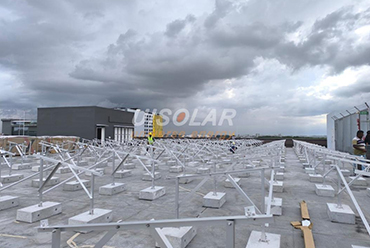
Recently, the French Ministry of Ecological Transition has completed the 9th round of rooftop photovoltaic (PV) tendering. This tendering round falls under the framework of the 6th multi-year energy plan (PPE2). Originally, 400MW was planned to be tendered, but ultimately, only 54 projects with a combined installed capacity of 220.3MW were awarded. Among these projects, 13 have an installed capacity of over 5MW, while the rest are between 500kW and 5MW. The projects will be installed on buildings, agricultural photovoltaic greenhouses, shading structures, and agricultural photovoltaic shading structures. Due to the decline in photovoltaic module prices, the winning bid price for this round was lower than the previous one. The average winning bid price was €98.2/MWh ($107/MWh), a 1.7% decrease from the previous round's €99.95/MWh. This is also the lowest winning bid price since the 3rd round of bidding. According to data from Finergreen, 62% of the awarded capacity is located in northern France. Projects have been awarded in all regions of France, with Hauts-de-France region topping the list with 55.2MW. Other major regions include CentreVal-de-Loire region with 30.9MW and Nouvelle-Aquitaine region with 27.7MW. In terms of winning companies, Urbasolar leads with a scale of 40.9MW, followed by UNITe (38.8MW) and GLP (20.9MW). The French government will continue to offer 400MW capacity in the 10th round of rooftop photovoltaic tenders, with the bidding application deadline set for March 28, 2025. It is worth noting that previously, the French Ministry of Industry and Energy announced that as of February 1, 2025, incentives for rooftop photovoltaic projects under 500kW will be reduced, which may affect the investment returns of future small-scale rooftop photovoltaic projects. UISOLAR, a pioneer in renewable energy, offers cutting-edge solar solutions tailored for diverse applications. With a focus on innovation, our high-efficiency rooftop PV systems and integrated Battery Energy Storage Systems (BESS) ensure optimal energy generation and storage. Our commitment to quality and sustainability makes UISOLAR the preferred choice for businesses and governments seeking reliable, clean energy. Join us in harnessing the power of the sun to achieve a greener, more sustainable future.
Read More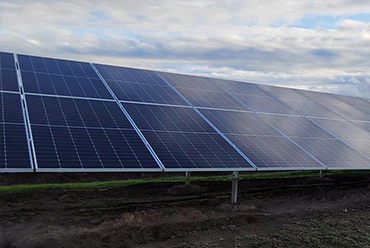
Recently, according to the European Photovoltaic Association's "Global Solar Market Outlook 2025-2029" report, although Brazil continues to consolidate its position as a regional solar power powerhouse, especially in the field of distributed generation, its growth rate will slow down significantly in 2025, and new capacity is expected to increase slightly from 18.9GW in 2024 to 19.2GW. The reason for the slowdown is mainly due to the adjustment of self-consumption policies and the delay of distributed generation grid connection, while transmission infrastructure restrictions are the main challenges facing large projects. It is worth looking forward to that the newly enacted energy storage regulations in 2025 are expected to further stimulate the development of the industry. Combining Absolar's data with the official forecast of the Brazilian Energy Research Company (EPE), by 2029, Brazil's cumulative photovoltaic installed capacity is expected to reach between 90GW in the conservative scenario and 107.6GW in the optimistic scenario. Among them, distributed installed capacity is expected to be between 54.2GW and 63.9GW, while Absolar estimates that the annual new installed capacity of centralized power generation will remain between 3.7GW and 5.3GW before 2029. Last year, Brazil's new solar installed capacity reached a record 18.9GW. However, after two consecutive years of explosive growth of 60%-81% in 2021-2022 and a 15% increase in 2023, the country has become the world's third largest solar photovoltaic market. The growth rate of 21% in 2024 is not enough to keep it in the top three, and it is now behind India (30.7GW), the United States (50GW) and China (329GW). High electricity prices, abundant sunshine resources, a sound bidding mechanism and a favorable net metering policy are the key to the rapid development of Brazil's photovoltaic industry before 2024. Despite the macroeconomic challenges, the increase in import tariffs on photovoltaic modules in 2024, and the high rate of power abandonment, its market performance still far exceeded government expectations.
Read More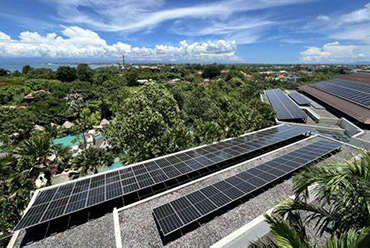
In an effort to promote local energy use and achieve energy independence, Bali, Indonesia, has officially launched a rooftop photovoltaic (PV) program aimed at accelerating the deployment of distributed solar energy systems in government agencies, public facilities and commercial premises. Recently, Wayan Koster, Governor of Bali Province, where Bali is located, announced the launch of the Social Initiative to Accelerate the Implementation of Rooftop Photovoltaic Power Plants in Bali. He said, “All provincial, municipal, and regency government agencies must use rooftop PV systems, in addition to all hotels, villas, schools, universities, and markets.” The program is a key component of Bali's “Net Zero Emissions 2045” goal, which was launched in July 2023 by the provincial government and the Institute for Essential Services Reform (IESR), Indonesia's energy policy think tank. According to IESR's assessment, Bali has a total PV potential of up to 22GW, of which rooftop PV has an exploitable potential of between 3.3-10.9GW, but the current utilization rate is still less than 1%. IESR calls on Bali to prioritize the deployment of rooftop PV systems equipped with energy storage systems (BESS), which is currently the fastest and least costly way to enhance the island's energy supply and ensure energy security Bali should prioritize the deployment of rooftop PV systems equipped with energy storage systems (BESS) as the fastest and least costly way to boost the island's energy supply and ensure energy security, while at the same time reducing its dependence on transmission lines in Java. Currently, Bali relies on submarine cables from Java for about 25 to 30 percent of its electricity. Fabby Tumiwa, Executive Director of IESR, noted, “The combination of rooftop PV and energy storage systems will both meet the surge in power demand following the outbreak and reduce the pressure on the national power utility to supply additional power.” According to Indonesia's national energy development target, the country will add 100GW of new power generation capacity by 2040, of which renewable energy will account for 75GW, while solar PV will contribute 27GW.
Read More
We are glad to invite you to visit us at Solar &Storage Live Philippines 2025, the most significant exhibition in the region dedicated to the solar industry. This prestigious event will take place on 19-20 May,2025, at the SMX Convention Center,Manila|Level 2,Function Room 1 to 5. Date: 19-20 May,2025 Location: SMX Convention Center,Manila,Philippines Booth No.: 2-J22 Why Attend? The Solar & Storage Live Philippines 2025 is one of Southeast Asia's leading platforms for solar energy. It provides an exceptional opportunity to connect with industry leaders, discover cutting-edge technologies, and discuss the latest trends in solar power. Don't miss out on this incredible opportunity to be part of Southeast Asia's leading solar energy event. Mark your calendar for 19-20 May,2025, and make sure to visit us at Booth No.2-J22 at SMX Convention Center,Manila,Philippines. We look forward to welcoming you and exploring how we can collaborate to drive the solar industry forward together! Let's meet in Manila!
Read More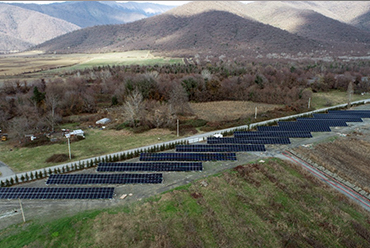
Introduction A massive blackout swept across Europe last week, leaving millions without power in Spain, Portugal, southern France, and parts of Andorra and Belgium. The outage, one of the worst in 20 years, affected nearly 60 million people and exposed critical vulnerabilities in Europe’s energy infrastructure. As experts call for urgent upgrades, Chinese technology—particularly in energy storage—has emerged as a key solution. Europe’s Wake-Up Call The blackout has forced European leaders to rethink their energy policies. Analysts, as reported by South China Morning Post (May 8), suggest this could be a turning point for the continent’s power grid strategy. With renewable energy playing an ever-larger role, outdated infrastructure is struggling to keep up. Spanish energy experts, including analyst Morales, have pointed to China’s advanced grid and storage technologies as essential for modernization. "We need China’s expertise to strengthen our energy systems," Morales said. "Storage technology is the priority—Spain and Europe must act now to prevent future failures." The Storage Gap—and How UISOLAR Can Help UISOLAR has driven innovation in solar and storage solutions, delivering high-performance renewable energy systems worldwide. Europe added 11.9GW of energy storage in 2024 (per EMMES), but the recent crisis proves more is needed. UISOLAR, a global leader in solar and energy storage innovation with 15+ years of experience, offers the cutting-edge solutions Europe requires: The blackout underscores an undeniable truth—Europe’s energy security depends on modernization and global partnerships. By leveraging Chinese advancements and UISOLAR’s proven technologies, Europe can build a resilient, sustainable grid. The time to upgrade is now. Is your energy infrastructure ready? Learn how UISOLAR can support your energy resilience—Contact us!
Read More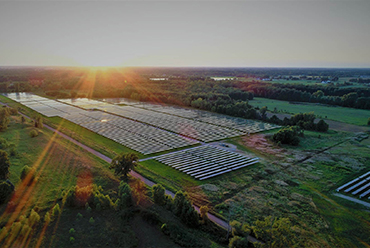
Recently, Japanese solar company TOYO announced that its solar cell factory in Ethiopia officially began operations in early April 2025, with an annual production capacity of 2GW. This milestone marks TOYO's entry into localized manufacturing in Africa. The company plans to deliver over 80MW of solar cells to customers by the end of April and increase monthly output to 150–200MW in May and June, reaching full production capacity. In March, TOYO revealed plans to double the factory’s capacity from 2GW to 4GW in response to strong external demand, aiming to supply core solar cells to its new 2GW module facility in Texas, USA. TOYO’s Chairman and CEO, Junsei Ryu, stated: “We are very optimistic about the robust market demand and are accelerating the expansion of our Ethiopian plant by another 2GW.” The launch of the Ethiopian factory coincides with the U.S. Department of Commerce imposing steep anti-dumping and countervailing duties on solar products from Cambodia, Malaysia, Thailand, and Vietnam. This move has prompted U.S.-based module manufacturers to urgently look for alternative, tariff-free sources of solar cells. Christian Roselund, Senior Policy Analyst at Clean Energy Associates, commented on LinkedIn: “Although most cell production has already shifted away from the four Southeast Asian nations, the new tariffs will eliminate any remaining capacity, blocking any recovery of their cell manufacturing industries.” Additionally, Philip Shen, Partner and Senior Analyst at Roth Capital, anticipates that the next round of anti-dumping and countervailing investigations, targeting India, Indonesia, and Laos, is likely to begin by the end of Q2 2025.
Read More online service
online service +86 (0592)5663849
+86 (0592)5663849 sales@uisolar.com
sales@uisolar.com solar-mount.au
solar-mount.au